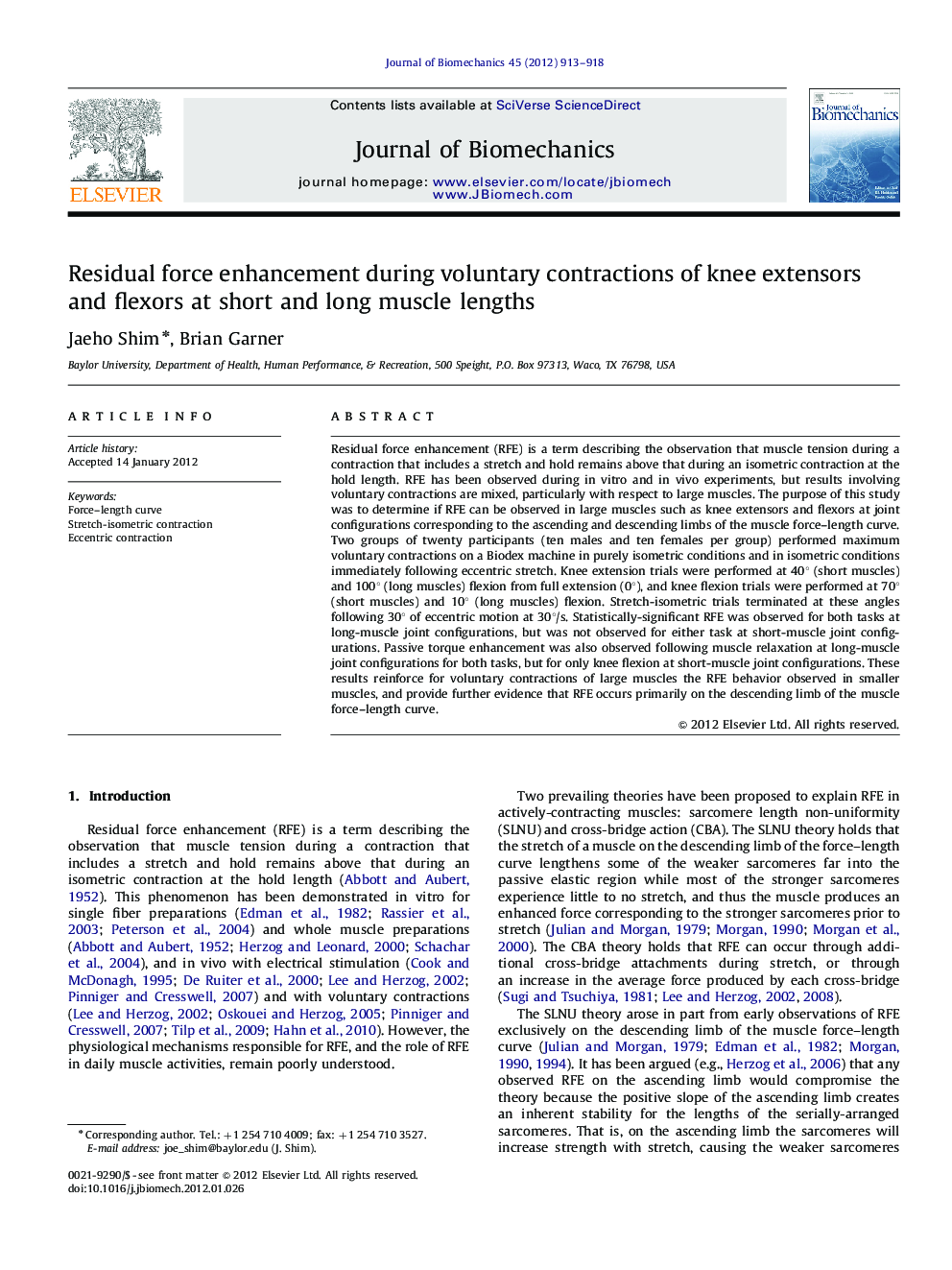| Article ID | Journal | Published Year | Pages | File Type |
|---|---|---|---|---|
| 10433140 | Journal of Biomechanics | 2012 | 6 Pages |
Abstract
Residual force enhancement (RFE) is a term describing the observation that muscle tension during a contraction that includes a stretch and hold remains above that during an isometric contraction at the hold length. RFE has been observed during in vitro and in vivo experiments, but results involving voluntary contractions are mixed, particularly with respect to large muscles. The purpose of this study was to determine if RFE can be observed in large muscles such as knee extensors and flexors at joint configurations corresponding to the ascending and descending limbs of the muscle force-length curve. Two groups of twenty participants (ten males and ten females per group) performed maximum voluntary contractions on a Biodex machine in purely isometric conditions and in isometric conditions immediately following eccentric stretch. Knee extension trials were performed at 40° (short muscles) and 100° (long muscles) flexion from full extension (0°), and knee flexion trials were performed at 70° (short muscles) and 10° (long muscles) flexion. Stretch-isometric trials terminated at these angles following 30° of eccentric motion at 30°/s. Statistically-significant RFE was observed for both tasks at long-muscle joint configurations, but was not observed for either task at short-muscle joint configurations. Passive torque enhancement was also observed following muscle relaxation at long-muscle joint configurations for both tasks, but for only knee flexion at short-muscle joint configurations. These results reinforce for voluntary contractions of large muscles the RFE behavior observed in smaller muscles, and provide further evidence that RFE occurs primarily on the descending limb of the muscle force-length curve.
Keywords
Related Topics
Physical Sciences and Engineering
Engineering
Biomedical Engineering
Authors
Jaeho Shim, Brian Garner,
